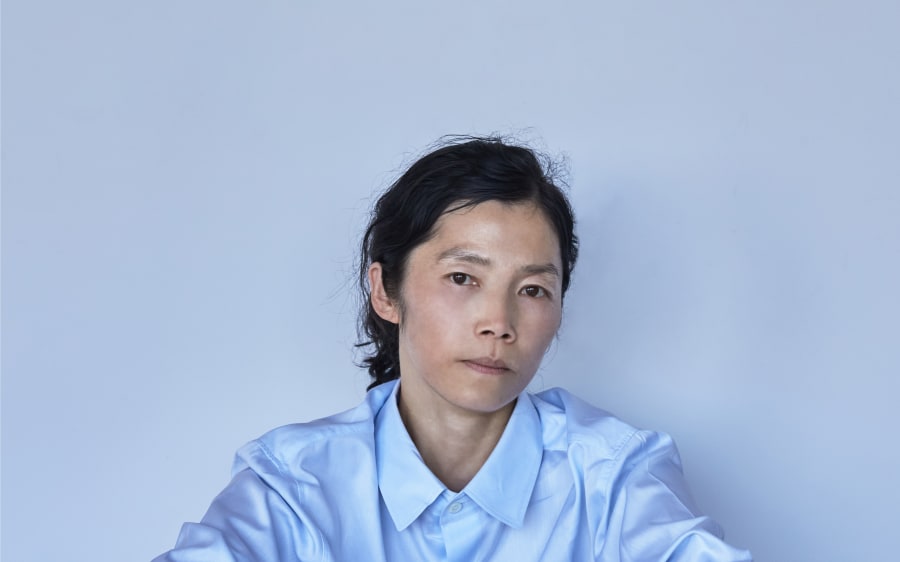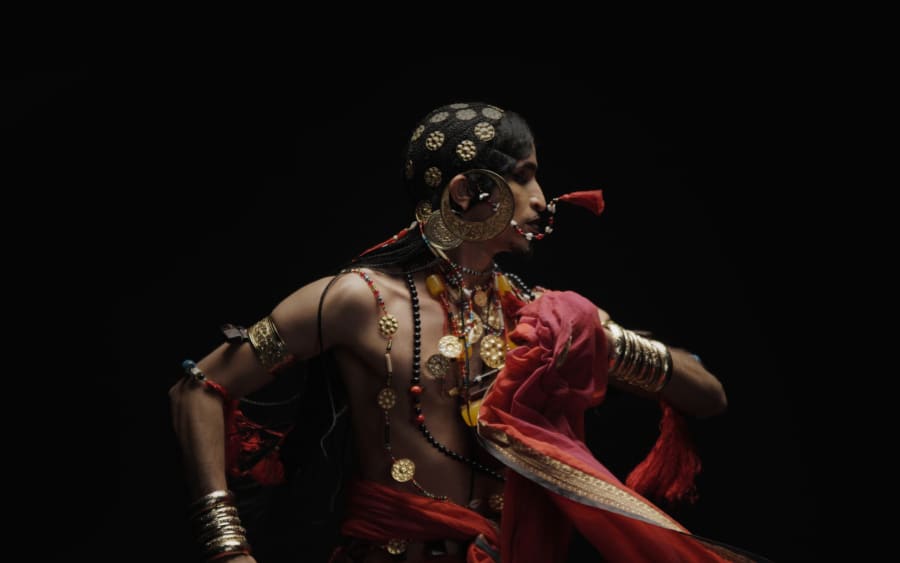Despite their significantly different histories, the Bagri Foundation and Asymmetry Art Foundation have much in common. Both are headquartered in London, focus on art from and around Asia, and champion agile approaches to patronage. They have now turned their natural affinities into a powerful new model for contemporary philanthropy.
The Bagri Foundation was founded in 1990 by Indian-born Lord Bagri to support education, healthcare, and relief work. His daughter-in-law, art historian Alka Bagri, expanded the foundation’s work into art and culture in the 2010s. ‘I had studied art from all over the Asian continent, including Japanese Sumi-e painting and Arabic calligraphy, so I wanted to ensure we expanded our remit into wider Asia,’ she explains. ‘But more importantly, I wanted to hear from living artists, and to make a space for their work to be shown.’
The foundation has since evolved into a major advocate for contemporary art. It has supported recent exhibitions in the UK by artists Melati Suryodarmo at IKON Gallery, Daido Moriyama at The Photographers’ Gallery, and Matthew Krishanu at Camden Arts Centre, and was a major supporter of Shahzia Sikander’s 2022 New York exhibition for Madison Square Park and the Courthouse of the Appellate Division, ‘Havah…to breathe, air, life’. In 2023, it concluded a 3-year partnership with London’s Hayward Gallery to produce outdoor commissions by Slavs and Tatars, Asim Waqif, and Monira Al Qadiri. The same year, the foundation partnered with Britain’s largest art award, the Artes Mundi Prize, for its 2023 and 2025 editions.
A much more recent addition to the British landscape, the Asymmetry Art Foundation was founded in 2019 by the Chinese-born, London-based patron Yan Du. Like the Bagri Foundation, it is taking a resolutely collaborative approach to its patronage, by centering partnerships and alliances with museums, institutions, art spaces, and biennials. Focusing on academic scholarships, curatorial fellowships, and public programming, the foundation responds to a gap in support for the broader ecosystem of art workers – from scholars to critics – doing what Yan describes as the ‘vital work’ of ‘creating dialogue, sharing knowledge, and introducing artists to their audiences.’
Initiatives include a fully funded PhD scholarship at the Department of Visual Cultures at Goldsmiths, University of London; a curatorial fellowship at the Whitechapel Gallery; a curatorial writing fellowship at Chisenhale Gallery; and The Courtauld x Asymmetry Chinese and Sinophone Contemporary Art Research Programme, which comprises two postdoctoral fellowships, a public lecture series, and an international symposium. More recently, Asymmetry and Tate Modern partnered to support two Asia-Pacific curatorial posts filled by Alvin Li and Hera Chan.
As Asymmetry director Michèle Ruo Yi Landolt explains, the foundation fully funds initiatives that are managed by partner institutions, creating ‘a certain ownership that in turn creates a solid foundation for trust and long-term collaboration on all levels.’ That model produces webs of interconnection across the foundation’s networks. A talk by the Filipino American duo Enzo Camacho and Ami Lien for The Courtauld’s 2024 lecture series, for instance, extended Asymmetry’s cooperation with the Centre for Contemporary Arts Berlin on the public program for the artists’ exhibition ‘Offerings for Escalante’, which highlighted struggles for food sovereignty and land justice on the Philippine plantation island of Negros.
Reflecting on the evolution of Asymmetry, Yan Du sees a replicable model rooted in generative alliances. ‘Asymmetry, like a delicate thread, loosely connects many communities, including artists, curators, and art practitioners,’ she notes. ‘I hope that more similar platforms can collaborate with us, so that together we can provide support to curators from different cultures and backgrounds, creating a more diverse and interesting arts landscape.’
Landolt continues: ‘We have grown so organically through collaborations and partnerships since our inauguration and continuously feel our branches yielding fruit. The world is a fast-paced place and oftentimes we equate evolving and growing with “bigger, better, faster,” but what we have learned is that personal relationships and connections can’t be replaced, and that conscious community building will remain at the heart of what we do.’
That practice of conscious community building was palpable at ‘A World of Many Worlds’, a one-day symposium staged by Asia Forum at Fondazione Querini Stampalia in April 2024 as a Venice Biennale Collateral Event, with the Asymmetry and Bagri foundations. Officially launched by Asia Forum founder Annie Jael Kwan at the 2022 Venice Biennale with the Bagri Foundation’s support, the 2024 edition was catapulted to another level, says Bagri Foundation director Chelsea Pettitt, thanks to Asymmetry’s co-organization. ‘It was a no-brainer,’ Pettitt says, comparing the nearly 150 attendees of the 2022 forum, which took place with limited marketing at the pandemic’s tail end, with the over 500 who attended the 2024 edition thanks to Asymmetry’s networks. ‘The solidarity felt on the day, at such a global level, was unparalleled in my experience.’
That solidarity, says Kwan, extends to how Bagri Foundation worked with Asia Forum from the start: ‘They understood that it took time to build audiences, and hence didn’t subject the project to an immediate predetermined form or criteria for success, but were willing to trust and work with us.’ The trust continued when it became clear that an organizational infrastructure was needed to continue the project. ‘We went back to Bagri to ask for this 3-year development support, that was somewhat unprecedented in relation to their other funding applications, and we were strengthened and energized by their support,’ Kwan recalls.
Seeking potential partners on that basis, Kwan found a natural collaborator in Asymmetry. ‘There were many overlaps of interests in artists working in relation to Asia, and a shared ethos around community and social gatherings,’ Kwan says. This complemented Bagri Foundation’s interest in working cooperatively and its perspective of Asia as a global context bridged by geographies, histories, and diasporas across the world.
All of which made ‘A World of Many Worlds’ a powerful collaboration. The event’s title referenced a 2018 book exploring a pluriverse of worldviews, in which editors Mario Blaser and Marisol de la Cadena quote the Fourth Declaration of the Lacandón Jungle: ‘The world we want is a world in which many worlds fit.’ That idea was reflected not only in the transnational composition of participants – among them, national pavilion artists Sandra Gamarra Heshiki, Lap-See Lam, Yuko Mohri, Mark Salvatus, Vidha Saumya, and Trevor Yeung – but also in the event’s organizational framework, as a community gathering of artistic and curatorial practices supported by foundations that are committed to finding ways to work together for the common good.
One artist roundtable on climate, racial, and social justice illuminated that commitment. Finding shared concerns for common resources among fellow panelists, artist Nida Sinnokrot and architect Sahar Qawasmi, founders of Sakiya, a progressive academy bridging contemporary art and ecological practice in Palestine, discussed the importance of developing alternative methods for living in the context of ecological crisis. ‘There are no sustainable technologies without sustainable mythologies,’ Sinnokrot said, referring to stories and songs that Indigenous communities share to transmit knowledge of the lands to which they are rooted, and art’s ability to engage those legacies to manifest sustainable pathways forward.
As public funding cuts and rising costs of living add pressure to the work of artists, cultural workers, and institutions alike, Sinnokrot’s point speaks to the current moment and the urgency to find ways of supporting an ever-fragile ecosystem – whether artistic or environmental. As Pettitt notes, ‘We are witnessing the impact of financial challenges on the sector to continue to deliver ambitious and risk-taking projects. Reflecting on this, we feel it’s important that we can bolster those ambitions.’
Stephanie Bailey is Art Basel’s Conversations Curator, Art Basel Hong Kong, as well as the Art Basel Content Advisor and Editor, Asia.
Caption for top image: The Bagri Foundation Commission: Asim Waqif, वेणु [Venu], 2023. Courtesy of the artist. Photo © Jo Underhill.
Published on June 25, 2024.


